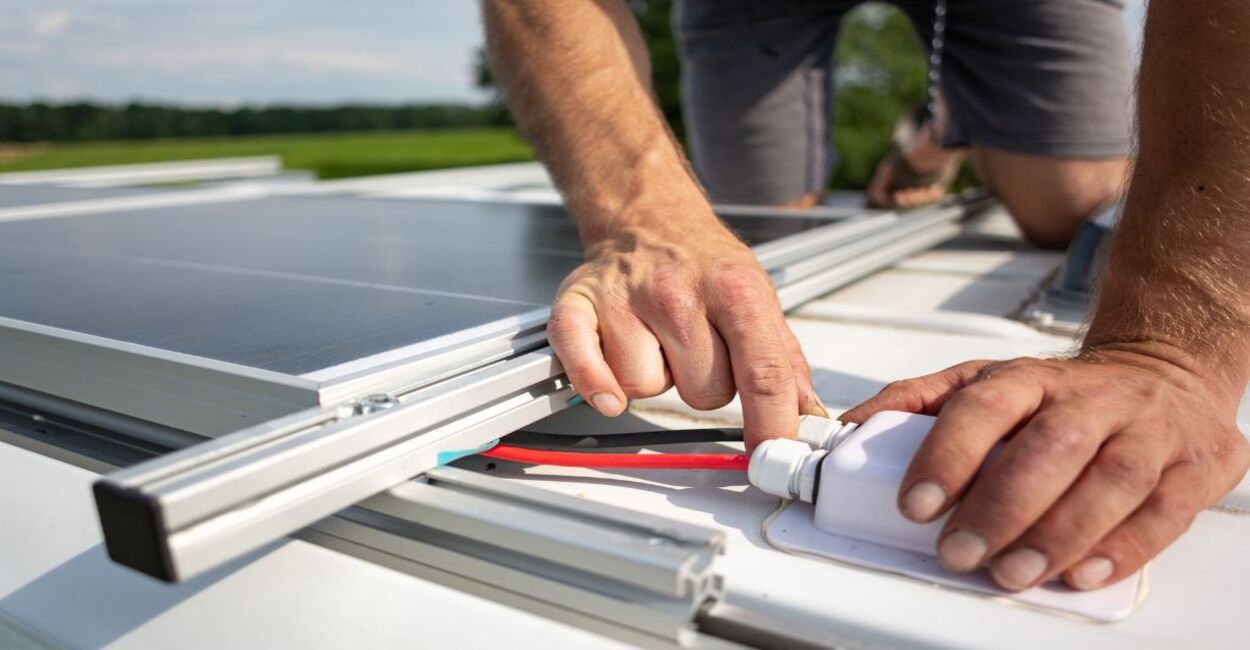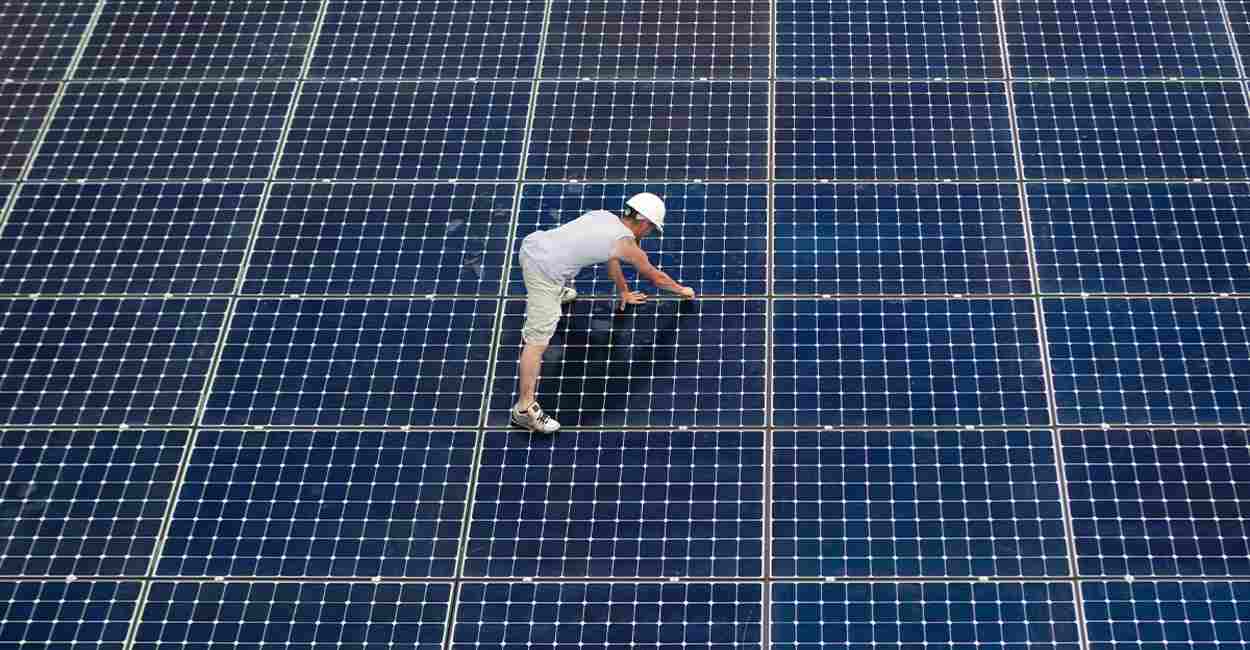What Happens If A Solar Panel Is Not Connected To Anything?

As per the described fact of science, energy cannot be destroyed, only transformed. So generally, the question that comes to mind is what will happen if you do not connect any load to solar panels? Is it safe to just leave your solar panels vacant?
A solar panel will generate a high voltage when vacant, but it will be conducted through the cells. The cells in the solar panel will increase their temperature with the increase in voltage, but the surface of the cells is larger enough to handle the heat. The solar meter will not work until a load is plugged into the system.
How To Deactivate A Solar Panel?
Here we have mentioned some of the most crucial safety precautions one can follow to dive into disconnecting solar panels.
Turn Off DC and AC Disconnect Switch
The primary step when disconnecting solar panels is switching off circuit breakers. For most installations, you will need to turn off the AC disconnect switch from the inverter to the main electrical panel and then the DC disconnect switch from the PV array to the combiner box.
Cover the Solar Panel
You should disconnect solar panels at hours when they are not generating power; always try to cover them with an opaque cloth before removing them. Following the same step can ensure no solar generation, making it safer to disconnect the modules.
Measure the Voltage of Each String of Modules before disconnecting it
To avoid electrocution and fire hazards, use a solar battery tester to measure the voltage at the solar panel or the array. This will ensure that they are close to 0 voltages before disconnecting them. Since MC4 connectors used for solar panels are weatherproof. This is the reason why you have to measure the voltage at the solar charge controller.
Disconnect the MC4 Connector of Each Solar Panel
After all, unplug the MC4 connector at the end of each solar panel. This can be done easily by using the disconnection/connection tool for MC4 connectors. One can use a socket wrench to replace it.
Cover the Plug of the Solar Panel with Electrical Tape
Whether you are migrating your solar panel or leaving it unplugged for a few days, cover the MC4 connectors with electrical tape to avoid electrocution risks.
Dismount the Solar Panel by Removing Bolts, Screws, and Clamping Nuts
If the solar system is not a portable solar panel and you need to move it, you must remove the bolts, screws, and clamping nuts at the mounting hardware. After this, you can move the solar panel to their new location or replace the faulty ones with a new one.
How To Store Solar Panels When Not In Use
There are various advantages to covering your solar panels when not in use.
Reduced heat
When a panel reaches the temperature of 125 degrees F, its performance can be impacted and can be reduced by up to 20%. When you cover your solar array with a tarp or blanket, the temperature of the panel drops dramatically. Keeping them covered when not in use will help maintain the optimal production output for years to come.
Reduced rain and snow impact
Rain and snow can add significant weight to your solar array. This weight can increase wear and tear on the roof of your home over time. If the weather of your location is rainy or snowy, covering your system will go a long way toward protecting your system from the elements.
Reduced algae growth
The generation of algae is not a unique concept when it comes to solar panels. Algae create shadows on the surface of the panels, which reduces their power output by up to 30%, which makes them less efficient. Covering your array with a tarp or blanket will prevent sunlight and moisture from reaching the panels. Keeping algae at bay and ensuring optimal performance year-round.
What Will Happen If No Load Is Connected To A Solar Photovoltaic System?
No “electricity” will be generated. Voltage and current are required for electricity. You have voltage (i.e., potential) but no current when the load is unplugged.
Here the next arises: what happens to the energy?
In the panel, this energy is then converted into heat energy, which is then transmitted.
If you put two similar panels next to each other, connect the first one to a load, and the other one does not connect to a load, it is seen that the disconnected panel will be hotter than the connected panel.
In the same way, if you examined the temperature of a loaded panel and then disconnected the load, the temperature of the panel would increase until it reached thermal equilibrium.
For instance, when a light bulb is loaded, a portion of the light energy is transformed into an electric field, which can then flow through the load.
Due to the ongoing energy conservation process, the amount of heat energy produced by the panel will be reduced in proportion to the sum of electrical energy produced.

Where Does The Electricity From Solar Panels Go?
Solar panels work by letting photons from the sun’s rays meet electrons free from atoms inside of photovoltaic cells (PV cells) to generate a flow of electricity. Each and every panel is composed of many solar cells linked together (that are typically 60 or 72). Each cell contains a positive and negative layer that combine to form an electrical field in which energy is created.
Phosphorus that is present inside the top silicon layer of the panels creates the negative charge, while boron which is at the bottom layer, gives the positive charge. The two fields interact with one another to turn the sun’s rays into the energy that flows from your panels to your inverter.
Step 1: Sunlight Activates Panels and Cells Produce Electrical Current
The sunlight hits the layers of the solar panels, and photons and electrons interact with each other to create an electrical current.
Step 2: The Electrical Energy is converted
The electrical current flows from the panels to the solar inverter, which converts the energy from your panels (DC) into usable energy for your home (AC).
Step 3: The Electricity Powers Your Home
The generated AC energy flows from the inverter into the breaker box, which will later circulate the energy throughout your home.
Step 4: Unused Energy is Stored or Potentially Returned for an Energy Bill Credit
Any unused AC will flow back to your utility meter and become available for consumption. In certain states, homeowners have the ability to return that unused AC back to the electric grid in the form of energy credits on their next power bill. This process is termed net metering in electricity generation.
How To Disconnect Your Solar Panel?
Homeowners sometimes choose solar power as they want the opportunity to disconnect their homes from the grid. The typical home solar system is designed in such a way that it helps in connecting the grid and pulls power when you need it, and pushes back electricity when you are producing more power than the requirement. This process is known as Net Metering (NEM). These grid-tied solar systems reduce the monthly electric bill, help the environment and protect humans from future electric rate increases from the utility.
The Benefit Of Staying Connected To The Grid
There are several advantages that you can avail yourself of if you are connected to the utility company. If the volume of generated energy is more than the requirement of your home, you can store the excess electricity with the utility company for usage at night or at a later date. This process is called net metering.
Net metering can also be used to store your power when the electricity is worth more to the utility. In this scenario, the electricity at peak times is compensated at a higher rate allowing you to use more electricity when the rates are lower at least cost.
Do Solar Panels Degrade When Not In Use?
The solar panels deteriorate over time due to typical wear and tear caused by UV radiation and unfavorable weather conditions.
Light-Induced Degradation
The exposure of the panels to light causes a variety of mechanical and chemical deterioration, including:
• Degradation caused by the light (LID). The degradation is caused by the interaction of the panel’s crystalline silicon cells with the outside environment. LID can last a few days or a week.
• Degradation caused by direct light (DLID). Direct sunlight during the initial setup time can cause the photovoltaic cells’ circuitry, which can further lead to distortion or buckle due to the heat. The effects of DLID can stay for several hours.
• Degradation caused by UV light (UVID). When exposed to sunlight, the crystalline silicon oxide on the surface of the panel forms a layer of boron dioxide which ultimately lowers its efficiency.
There is an adjustment period during which the photoconductivity is decreased, reducing the panel’s efficiency by 1-3 % for the first 1,000 hours, after which it stabilizes.
Conclusion
Solar panels are not perfect, but they are among the safest power sources in today’s time. As long as the connections and installation are completed in the right way, and the system is not overloaded, you do not have to worry about something untoward happening.

